In Pictures: 20 First-Person Shooters That Need a Makeover
Redneck Rampage
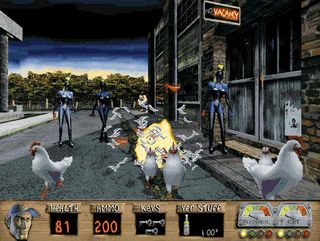
Interplay's Redneck Rampage hit the scene back in 1997, telling the story of two brothers, Bubba and Leonard, on a mission to save their prized pig Bessie from alien kidnappers. Taking the role of the latter brother, players used a variety of weapons against evil clones of their neighbors, local animals, and insects turned into annoying, aggressive adversaries. The game was full of campy humor and redneck jokes ranging from one-liners like "get off my land!" to moon pies and pork rinds ultimately giving the brothers gas. Although Redneck Rampage scored average reviews fourteen years ago, the game brought a new flavor to the FPS genre.
Shadow Warrior
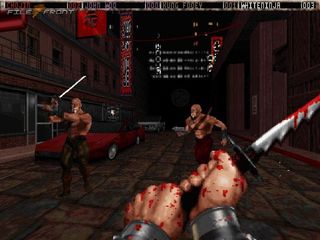
Riding on the popularity of Duke Nukem 3D, developer 3D Realms took away the guns and introduced a ninja assassin's katana with the release of Shadow Warrior. The game hit DOS back in 1997 using an improved version of Ken Silverman's Build engine and, like Duke Nukem, relied on a charismatic action hero. This time it was Lo Wang who churned out witty one-liners and ultra-violent action. Shadow Warrior also set the stage for future gameplay elements, such as using sticky bombs, drivable vehicles with active turrets, climbable ladders, multiple firing modes, and transparent water. Despite its technological advances, the game didn't sell nearly as well as Duke Nukem 3D, and even received criticism for the racial stereotyping of Lo Wang's character. The game spawned two novels and two expansion packs.
Shogo: Mobile Armor Division

Monolith developed and published Shogo: Mobile Armor Division (MAD) back in 1998 and was the first to use the studio's flagship LithTech engine. Unlike its previous FPS franchise, Blood, Shogo: MAD drew its inspiration from Japanese anime like the Gundam series, Appleseed, and Patlabor. It also mixed game styles, combining the traditional on-foot FPS combat with a bipedal mech, ignoring the rigid, robotic control scheme previously established by Microsoft's MechWarrior franchise. The game is still loads of fun, offering an engaging single-player campaign and a multiplayer component. Shogo: MAD didn't yield expansion packs or sequels, and Monolith even stated that it had no plans to continue the franchise. However, the studio dropped hints of a possible continuation in other games, such as The Matrix Online, F.E.A.R. 2: Project Origin, and even a promotional demo for LithTech 3.0.
System Shock
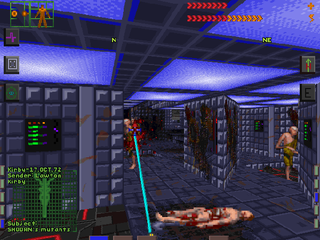
In the wake of id Software's DOOM 2, Looking Glass developed the now-classic System Shock for DOS and Macintosh, becoming one of the first FPS games to grant players the ability to look up and down, jump, duck, and lean to one side. The game took place aboard the Citadel Station in the year 2072 where the player had to stop the plans of a malevolent artificial intelligence named SHODAN. The original version shipped on floppy disk with no speech and support for only 320 x 200; later a CD version was released offering full speech for emails and logs, and multiple resolutions, including 640 x 480. The sequel, System Shock 2, hit shelves in 1999.
The Terminator: Future Shock, SkyNET
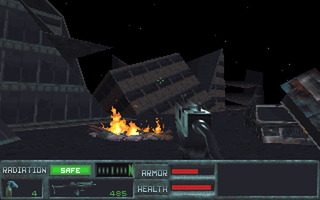
Bethesda Softworks published The Terminator: Future Shock in 1996 and SkyNET shortly thereafter. The story behind the first game took place in the near future of 2015, portraying SkyNET as having perfected time displacement in order to relay information back to 1995, thus increasing the speed at which it becomes sentient. Although the game was one of the first to incorporate "freelook" mouse controls, the multiplayer element wasn't added until the sequel, SkyNET.
Thief: The Dark Project
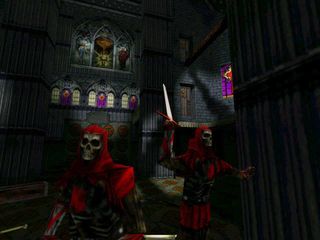
Classified as a first-person stealth game, Thief: The Dark Project was developed by Looking Glass Studios and published by Eidos in November 1998. Gamers assumed the role of a thief named Garrett who stole valuables in a medieval steampunk metropolis simply known as the City. At the time of its launch, Thief offered a different approach to FPS gaming by forcing players to be non-confrontational, opening the door to later stealth franchises like Hitman and Splinter Cell. The game used Looking Glass' proprietary Dark Engine, which was used again later to develop System Shock 2.
Unreal
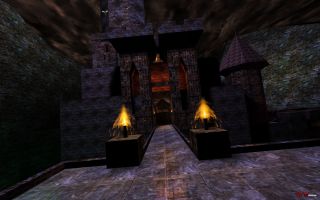
Here's another classic FPS that really doesn't need an introduction or explanation: Unreal. Epic Games and Digital Extremes brought Unreal to the PC in 1998 and more than lived up to three years of pre-launch hype, giving id Software id Tech 2 a run for its money. At the time, the engine introduced superior colored lighting, large outdoor maps, a competitive software renderer, and detailed texturing. The game also offered built-in bot support for online multiplayer action and the bundled UnrealEd map editor for creating custom maps. Eventually, the game was updated to run on the Unreal Tournament engine years later, but an Unreal Engine 3 version would be ideal, rebuilt from the ground-up using Epic's latest technology.
Stay on the Cutting Edge
Join the experts who read Tom's Hardware for the inside track on enthusiast PC tech news — and have for over 25 years. We'll send breaking news and in-depth reviews of CPUs, GPUs, AI, maker hardware and more straight to your inbox.
Wolfenstein 3D
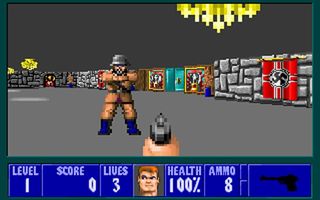
This game seemingly invaded every platform since it was released back in 1992, recently landing on iOS, the PlayStation Network, and Xbox Live Arcade. Players took on the role of William "BJ" Blazkowicz as he attempted to escape Castle Wolfenstein and take down the Nazi regime. Wolfenstein 3D spanned three episodes filled with blue walls, gray floors, hidden treasures, aggressive guard dogs, and Nazi soldiers. The game spawned one prequel and two sequels.
South Park

Didn't expect to see Acclaim Entertainment's South Park-themed FPS, did you? The PC version was the last of three to be released by the end of the 1990s, and it was a unique way to bring the South Park characters to fans. Using Acclaim's Turok 2 engine, players hunted down killer cows, mutant turkeys, and giant clones with yellow snowballs, rubber dodge balls, cow launchers, toilet plunger launchers, and even gassy Philip and Terrence dolls. Overall, and on every platform, the game was smacked around by critics. But it was geared towards South Park-loving FPS players, which suited me just fine.
-
iam2thecrowe couldnt agree more with heretic/hexen remake. Does anyone remember Rise of the Triad? that was a great FPS at the time.Reply -
iceman1992 hey toms when i click "read more" the entire text body disappears and is replaced by adsReply -
mayankleoboy1 Replyhey toms when i click "read more" the entire text body disappears and is replaced by ads
+1
something wrong with the pages. -
palladin9479 What the hell toms. Most of the article is covered in adds, can't see the pictures or read the article without adds covering up the words and pictures.Reply -
thesnappyfingers well, this is unreadable, and unusable at the moment. I can't change the photo, and I cant "read more".Reply -
jcaulley_74 Can you please completely do away with the read more button. It's completely useless. If I want to stop reading in the middle, I'm perfectly capable of stopping myself. The read more button is nothing more than an annoyance. I like the slideshow type articles you've had, but the read more just needs to die.Reply -
palladin9479 Ok I was able to make it readable, but only by block EVERY flash add on the page.Reply
Seriously toms, your a tech site, if your going to use flash ad's then you need to be smart about their placement and usage.
Most Popular





